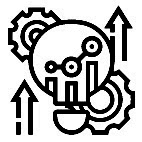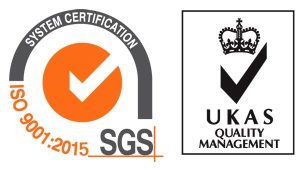Rubber Introduction
EPDM - Ethylene Propylene Rubber
| Structure | ethene, proplylene, and trace third monomer |
| Specific Gravity | 0.86~0.87 |
| Different viscosity ML1+ (100℃) |
50~150 |
NBR - Nitrile Butadiene Rubber
| Structure | copolymer of styrene-butadiene and ACN |
| Specific Gravity | 1.00~1.20 |
| Different viscosity ML1+ (100℃) |
30~100 |
NR - Natural Rubber
| Structure | Polyisoprene; latex |
| Specific Gravity | 0.92 |
| Different viscosity ML1+ (100℃) |
90~150 |
SILICONE - MQ、VMQ、PMQ
| Structure | main mixing is combined by si-o-si |
| Specific Gravity | 0.95~0.98 |
| Different viscosity ML1+ (100℃) |
fluid |
FKM - Fluorocarbon
| Structure | polymer of 6 fluorine prolylene fluorine ethene |
| Specific Gravity | 1.80~1.82 |
| Different viscosity ML1+ (100℃) |
65~180 |
CR - Chloroprene Rubber
| Structure | chlorine butadiene |
| Specific Gravity | 1.15~1.25 |
| Different viscosity ML1+ (100℃) |
45~120 |
PU、AU、EU - Polyurethane
| Structure | polyurethane |
| Specific Gravity | 1.00~1.30 |
| Different viscosity ML1+ (100℃) |
25~60 fluid |
HNBR - Hydrogenated Nitrile Butadiene Rubber
| Structure | Obtained by saturating the hydrocarbon chains of Nitrile rubber with hydrogen |
| Specific Gravity | 0.95~1.08 |
| Different viscosity ML1+ (100℃) |
50~130 |
Common Rubber Features
| Name | Weather resistant | Wear-resistant | Mechanical strength | Temperature resistance | Oil resistant | Water resistant | Acid resistant | Alkali resistant | Apply low temperature | Apply high temperature |
|---|---|---|---|---|---|---|---|---|---|---|
| EPDM - Ethylene Propylene Rubber | 5 | 4 | 2 | 4 | 1 | 5 | 4 | 4 | -55℃ | 125℃ |
| NBR - Nitrile Butadiene Rubber | 1 | 5 | 4 | 1 | 4 | 4 | 4 | 4 | -55℃ | 125℃ |
| NR - Natural Rubber | 2 | 5 | 5 | 1 | 1 | 5 | 3 | 1 | -55℃ | 70℃ |
| SILICONE - MQ、VMQ、PMQ | 5 | 1 | 2 | 5 | 3 | 4 | 2 | 1 | -50℃ | 200℃ |
| FKM - Fluorocarbon | 5 | 2 | 4 | 5 | 5 | 4 | 4 | 3 | -26℃ | 232℃ |
| CR - Chloroprene Rubber | 4 | 4 | 4 | 3 | 3 | 4 | 4 | 5 | -40℃ | 100℃ |
| PU、AU、EU - Polyurethane | 4 | 5 | 5 | 2 | 4 | 2 | 1 | 1 | -40℃ | 80℃ |
| HNBR - Hydrogenated Nitrile Butadiene Rubber | 4 | 5 | 5 | 4 | 4 | 4 | 4 | 4 | -40℃ | 150℃ |
Advantages/ disadvantages of various rubber
Advantages
- Excellent ability of oxidization resistance, ozone resistance, erosion resistance, and can endure the sunlight irradiation, therefore extensively apply to outdoor circumstances.
- Among lots of rubber category is the lowest specific gravity. It can absorb a lot of quantity of filler/ oil through this features which don’t influence a lot so that can produce low cost of rubber chemical compound.
- Oil resistance and high pressure oil resistant , chemistry resistant and superior machine performance resistant. They are the most widely used rubber.
- Contrast to other plastic, NBR has more wider usage temperature: Long term use temperature reach up 120℃, the lowest vitrification temperature is -55℃.
- Non-toxic and environmental protection.
- Chemical property is stable, not to burn. They can used for heat separation and heat radiation. Under 150°, they can almost be used forever and without any change of their performance.
- Can resist UV, with heat resistant, effect of tearing resistant. Can contact inside of human body for a long time and provide the protection of human body.
- with excellent chemistry resistant (excpet MEK, ketone items, ester items).
- Most of oil and solvent resistant, burning resistant, weather resistance and ozone resistance.
- Good physical machine performance, electric insulation property and radiation resistant…. etc.
- Good elasticity and compression deformation (physical machine performance is better than NR -Natural Rubber).
- With buring proof, burning resistant, ( Can put out of fire itself after catch fire).
- Ozone resistance , weather resistance etc. features.
- Mineral oil resistance items and many chemistry substances.
- Oil resistance.
- High pressure resistance.
- Excellent machine strength
- Good resistance to long-term exposure to heat, oil, and chemicals. Also good with aging resistance and low temperature resistance.
- Excellent resistance to common automotive fluids (e.g., engine oil, coolant, fuel, etc.) and many industrial chemicals.
Disadvantages
- Intolerance for high-concentrated acid category and oil category (gasoline, kerosene, aryl, and halogenate solvent, we suggest not using on foodstuffs.Or expose in aromatic hydrocarbon.
- Are not allowed to use for foodstuff.
- Products are easy to spray frost (rise white fog on surface of product ) to make poor self-viscosity and reciprocal viscosity.
- Are not suitable for chemical polarity solvent (Ozone, ketone items, MEK,Nitro- and chloroform…etc).
- Inferior insulation property, cold resistant and Ozone resistance and lower elasticity.
- Oxygen intolerance, Ozone intolerance.
- Heat intolerance.
- Oil intolerance and solent resistant property.
- Low ability of acid resistance.
- Is easy to age in the air.
- Low tensile strength, high strength tearing intolerance, abrasion intolerance.
- Fuel oil intolerance.
- We do not recommend to use in most concentrating solvent, concentrating acid, oil items and sodium hudroxide after dilute.
- Poor heat tensile and heat tearing, High compression deformation in high temperature water.
- Polar solvent intolerance
- Poor cold resistant ( generally use temperature range is 20~250 ℃)
- Inferior cold resistant, It’s easy to crystalize and harden during low temperature.
- Specific gravity is larger, the cost is relatively high.
- Poor electric insulation property.
- It’s easy to bind rolling, scorch and bind mold during process.
- Phosphoric acid ester series hydraulic pressure oil intolerance, large amount expansion in mineral oil of low aniline point.
- Rubber has poor stability and not easy to keep.
- High temperature intolerance.
- Under the circumstance of high humidity, it will cause AU hydrolysis and accelerate the condition of degradation.
Apply to industries
- Fill in polymer to change its nature.
- Can change its formula to increase viscosity.
- Have excellent application for outdoor products including Sport goods, parts of off-road vehicle, seal strip of auto, seal strip of building.
- Cable, wire set items of chemical equipment, seal items under high temperature mist, and O-ring,etc.
- Excellent feature of oil resistance become the standard elastomer for application of oil resistance that widely use for motorbike and auto, aviation aerospace, petroleum, petrochemical etc. industries. Such as oil resistant tube, O-ring, oil seal, rubber membrane, and big type of sack etc.
- Also use for making plastic board and wear resistance parts…etc.
- Medical treatment industry: use for medical gloves, blood transfusion tube, condom.
- Can see in daily life: water proof boots, galoshes, elastic.
- Conveyer belt for industry, shock absorbing parts and various of tires.
- Bacteria is not easy to grow on silicone and not pollute or corrode the other material. Can be made to become medical treatment products which conform with FDA,ISO…etc.
- Excellent features of ventilation and non-toxic. They are in common use formedical treatment and organs in human body. Such as: oil resistant pipe, O-ring, oil seal, rubber membrane, and big type of sack etc.
- Good insulation. They also widely use for semi-conductor, electronic, communication industry.
- Due to its high temperature resistance, anti-aging, they are also often seen in auto industry and industry.
- Can also be used as filler to change the feature of other material.
- Can be applied for People’s livelihood industry, aerospace, auto industry, chemical process and many industries.
- More high fluorine content, more able to use for severe environment. Such as aerospace, chemical process….etc.
- Are often used for machinery industry, such as hydraulic pressure cylinder seal items. High pressure electric charge electric system.
HNBR has wide applications in auto and oil industries. Such as seals, oil seals, hoses, and belts.
- Silicone is actually not rubber. Rubber is composed of organic carbon, and silicone is polymer between organic and non-organic. The main composition is silica, therefore is also called (polymerized siloxanes or polysiloxanes).
- FKM generally stands for fluorine rubber which reach up 66% fluorine content. If customers request higher demand, we can increase fluorine content in order to improve (chemical property resistance and physical property resistance) so can endure the circumstance with high erosion that the selling price is able to increase.
- Distinguish between FKM and FPM: both are the abbreviation of fluorine rubber. FKM : European abbreviation. FPM: American abbreviation.
NBR is copolymer of styrene-butadiene and ACN
Influence of uneven ACN content
ACN low content
ACN high content
ACN low content
ACN high content
Silicone Vs Plastics
| Performance | Silicone products | Same kind of plastic products |
|---|---|---|
| Poison/Odor | none | Mostly have |
| Environmental Protection/ degradable | Yes | No |
| Cold resistant/crisp resistant | Hardy -40°C, No Crisp | Hardy -40°C, Crisp |
| Burn performance | 330°C | 100~150°C |
| High temperature resistant | difficult inflammation, not generate toxic substance | Inflammable, Generate toxic substance |
| Soft/pliable & tough | Superior | Poor |
| No color fading/ no flavesscent | Yes | No |
| Non-slip | Good | Poor |
| Flexibility/shockproof | Superior | Poor |
| Transparency | High | High |
| Physiology inert/ chemistry stability | Superior | Good |
| Anti-aging/ long usage life | Yes | Yes |
| Wear resistant | Good | Good |
| Insulation | Superior | Superior |
| Color-fading resistant | Good | Good |
Because silicone is not petroleum product can prevent causing the rising cost due to fluctuation of international oil price. In addition, source of goods are stable, their features of non-toxic, odorless, high temperature resistant and environment protection (recyclable) can gradually replace the plastic products with the same property.
The silicone materials Yingko uses are all have got certificated by FDA,SGS,LFGB..etc.
Introduction of producing flow

- Sample
- Design diagram
- Material specification

- Design diagram
- Customer's approval
- Design mold
- Producing mold
- Inspect mold

- Produce sample
- Inspect first piece
- Customer's approval (inessential)

- Rubber / Silicone
- Inspect feed material

- Vulcanizing forming
- Second vulcanizing

- Key size inspection
- Exterior appearance inspection
- Package

How do the customers choose the material?
Consideration factors for rubber material choice
Changing factors of usage conditions
- The substance that rubber touches: chemical medicament, acidity , alkali, oil liquid, vapor,solid ...etc.
- Use temperature region: the lowest temperature ~ the highest temperature.
- Pressure region: the lowest compression ratio that rubber endure the pressure.
- Usage situation: dynamic or motionless state.
Changing factors of products design
- Tolerance allowed range.
- Assembly way of rubber and other accesory.
- Might bring chemical reaction.
- Choose the material that conform cost consideration.
- Date of expiry.
Material Norm
YINGKO comply with the regulation of various countries, like American Material Norm (ASTM, MIL, UL, AMS) Germany Material Norm (DIN), Japan Material Norm(JIS) etc.
Inspection request
- Conform the inspection standard by both parties request.
- Decide sample quantities and requirement situation.




